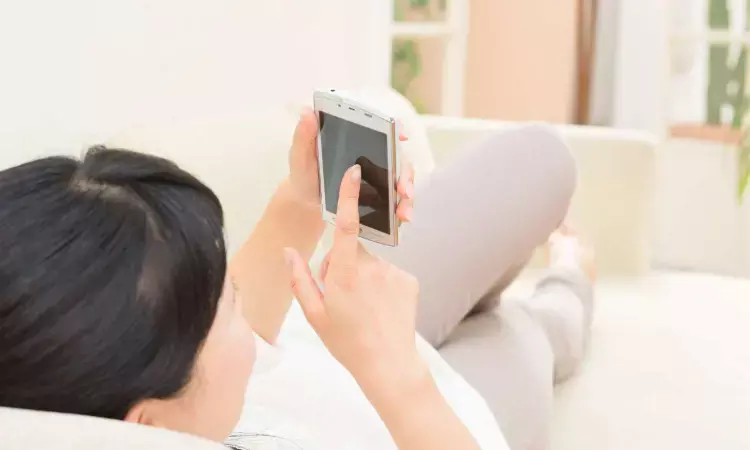- Home
- Medical news & Guidelines
- Anesthesiology
- Cardiology and CTVS
- Critical Care
- Dentistry
- Dermatology
- Diabetes and Endocrinology
- ENT
- Gastroenterology
- Medicine
- Nephrology
- Neurology
- Obstretics-Gynaecology
- Oncology
- Ophthalmology
- Orthopaedics
- Pediatrics-Neonatology
- Psychiatry
- Pulmonology
- Radiology
- Surgery
- Urology
- Laboratory Medicine
- Diet
- Nursing
- Paramedical
- Physiotherapy
- Health news
- Fact Check
- Bone Health Fact Check
- Brain Health Fact Check
- Cancer Related Fact Check
- Child Care Fact Check
- Dental and oral health fact check
- Diabetes and metabolic health fact check
- Diet and Nutrition Fact Check
- Eye and ENT Care Fact Check
- Fitness fact check
- Gut health fact check
- Heart health fact check
- Kidney health fact check
- Medical education fact check
- Men's health fact check
- Respiratory fact check
- Skin and hair care fact check
- Vaccine and Immunization fact check
- Women's health fact check
- AYUSH
- State News
- Andaman and Nicobar Islands
- Andhra Pradesh
- Arunachal Pradesh
- Assam
- Bihar
- Chandigarh
- Chattisgarh
- Dadra and Nagar Haveli
- Daman and Diu
- Delhi
- Goa
- Gujarat
- Haryana
- Himachal Pradesh
- Jammu & Kashmir
- Jharkhand
- Karnataka
- Kerala
- Ladakh
- Lakshadweep
- Madhya Pradesh
- Maharashtra
- Manipur
- Meghalaya
- Mizoram
- Nagaland
- Odisha
- Puducherry
- Punjab
- Rajasthan
- Sikkim
- Tamil Nadu
- Telangana
- Tripura
- Uttar Pradesh
- Uttrakhand
- West Bengal
- Medical Education
- Industry
Smartphone Use on Toilet Linked to Higher Hemorrhoid Risk: Study

A new study published in the journal of PloS One found that people who used smartphones while sitting on the toilet had a 46% higher risk of developing hemorrhoids when compared to non-users. One key factor was prolonged toilet time, with 37.3% of phone users reporting spending more than 5 minutes per trip. This research suggest that physicians should ask patients with bowel issues about their smartphone use in the bathroom, as it may be an overlooked contributor to hemorrhoid risk.
This study investigated the link between smartphone use during toilet time and the prevalence of hemorrhoids. The study surveyed 125 adults undergoing screening colonoscopies, provides one of the first multivariate analyses exploring this modern habit. The participants completed detailed surveys about their bathroom behaviors, smartphone usage, and lifestyle factors like fiber intake, physical activity, and frequency of straining.
Of the 125 participants, 43% were found to have hemorrhoids. Smartphone use on the toilet was common—66% admitted to bringing their devices into the bathroom. Interestingly, smartphone users were younger on average than non-users (mean ages 55.4 vs. 62.1).
The analysis showed that time spent on the toilet was notably longer among smartphone users. While only 7.1 percent of non-users reported sitting for more than 5 minutes per visit, a substantial 37.3% of smartphone users did so. The study pointed out that prolonged sitting can increase rectal pressure, which is a known risk factor for hemorrhoids.
After accounting for potential confounding factors like age, sex, body mass index, fiber intake, straining, and physical activity, this association held. Smartphone use on the toilet was linked to a 46% increased risk of hemorrhoids, a finding that reached statistical significance (p = 0.044).
Beyond the numbers, the study also explored what people actually do on their phones while seated. The most common activity was reading news, reported by 54.3% of users, followed by scrolling through social media (44.4%).
Taken together, the findings suggest that the seemingly harmless habit of checking phones in the bathroom may be contributing to a quiet rise in hemorrhoid cases. While the study does not prove causation, the research found that the data adds weight to long-standing anecdotal advice to limit the time spent sitting on the toilet.
Overall, the study recommend that physicians consider asking about smartphone use when evaluating patients with hemorrhoids and that public health messaging address the potential consequences of prolonged toilet sitting.
Source:
Ramprasad, C., Wu, C., Chang, J., Rangan, V., Iturrino, J., Ballou, S., Singh, P., Lembo, A., Nee, J., & Pasricha, T. (2025). Smartphone use on the toilet and the risk of hemorrhoids. PloS One, 20(9),. https://doi.org/10.1371/journal.pone.0329983
Neuroscience Masters graduate
Jacinthlyn Sylvia, a Neuroscience Master's graduate from Chennai has worked extensively in deciphering the neurobiology of cognition and motor control in aging. She also has spread-out exposure to Neurosurgery from her Bachelor’s. She is currently involved in active Neuro-Oncology research. She is an upcoming neuroscientist with a fiery passion for writing. Her news cover at Medical Dialogues feature recent discoveries and updates from the healthcare and biomedical research fields. She can be reached at editorial@medicaldialogues.in
Dr Kamal Kant Kohli-MBBS, DTCD- a chest specialist with more than 30 years of practice and a flair for writing clinical articles, Dr Kamal Kant Kohli joined Medical Dialogues as a Chief Editor of Medical News. Besides writing articles, as an editor, he proofreads and verifies all the medical content published on Medical Dialogues including those coming from journals, studies,medical conferences,guidelines etc. Email: drkohli@medicaldialogues.in. Contact no. 011-43720751


